Guppies are colorful and friendly fish that are loved by many aquarium owners. They’re easy to care for and bring a lot of life to any tank. But if you want to make your aquarium even more interesting, adding other types of fish can be a great idea. The key is to choose fish that get along well with guppies.
Not all fish are good tank mates for guppies. Some might be too aggressive, while others might need different water conditions. This guide will help you find the best fish to keep with your guppies, so your tank can be a peaceful and happy place for all your fish. Whether you’re new to fishkeeping or have been doing it for years, finding the right tank mates is important to keeping your guppies healthy and stress-free.
Understanding Guppies: Why They’re Great Pets
The Popularity of Guppies
Guppies are among the most popular freshwater fish for home aquariums. Their popularity stems from their vibrant colors, lively personalities, and ease of care. They are often the first choice for beginners but are also cherished by experienced aquarists who appreciate their beauty and the dynamic energy they bring to a tank.
Related reading: Can Guppy Live With Neon Tetra?
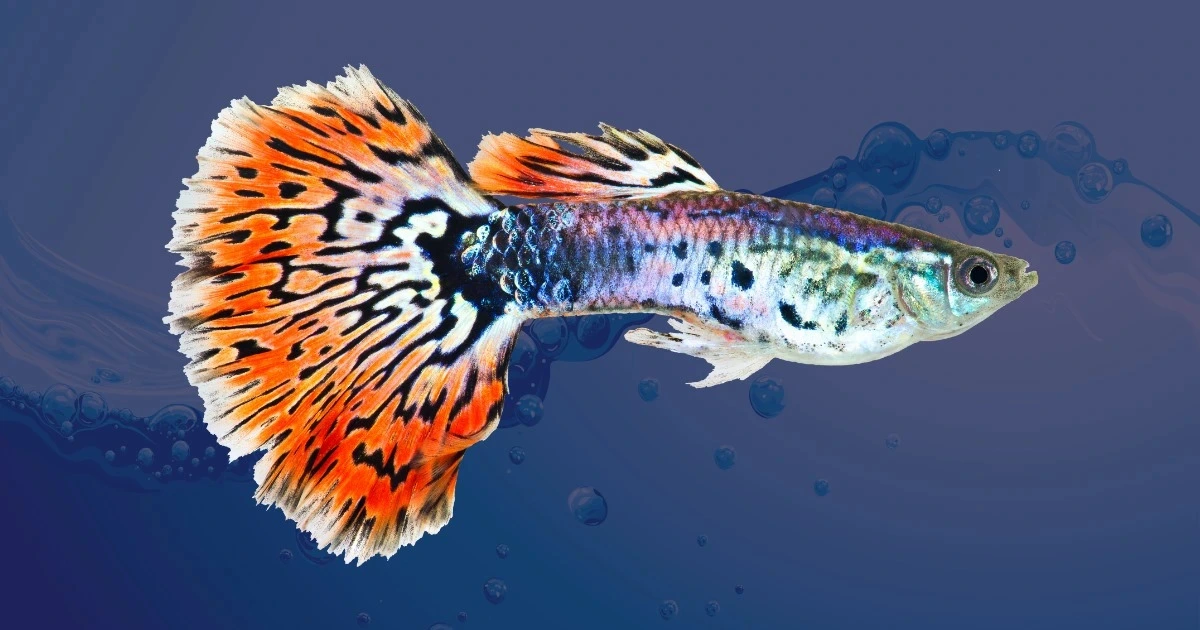
Guppies’ Physical Characteristics
Guppies are small fish, generally reaching about 2 inches in length. Male guppies are usually more colorful than females, sporting bright, vivid patterns on their bodies and fins. These colors can range from blues and greens to reds, yellows, and oranges, often with spots, stripes, or intricate designs. The females, while less colorful, have larger bodies and shorter fins.
One of the most striking features of male guppies is their long, flowing tails. These tails, while beautiful, make them slower swimmers and can make them targets for more aggressive fish that might nip at their fins.
Guppies’ Behavior and Habitat
Guppies are peaceful fish that enjoy swimming in the middle to upper levels of the tank. They are social creatures, thriving in groups, and prefer to be kept in schools of six or more. Guppies are also livebearers, meaning they give birth to live young rather than laying eggs. This can lead to a rapidly growing population if males and females are kept together.
In the wild, guppies are found in various environments, including rivers, lakes, and even brackish water. They are adaptable and hardy, able to thrive in a range of water conditions, which is part of what makes them so easy to care for in a home aquarium.
Why Consider Tank Mates for Guppies?
Enhancing the Aquarium Environment
While a tank with only guppies can be beautiful, adding other compatible species can create a more dynamic and interesting environment. A variety of fish brings different colors, behaviors, and activities to the tank, making it more enjoyable to watch. Additionally, having fish that occupy different levels of the tank can make the aquarium feel more balanced and full.
The Role of Different Tank Levels
As mentioned, guppies typically swim in the upper and middle parts of the tank. This means that the bottom of the tank might look bare if you only have guppies. Adding bottom-dwelling fish can help fill out the lower levels, creating a more visually appealing setup.
Social Interaction and Behavior
Fish are social creatures, and many species benefit from interacting with others. By adding compatible tank mates, you can provide your guppies with a more stimulating environment. This can lead to more natural behaviors and a healthier, happier tank overall.
Avoiding Overcrowding and Stress
While adding tank mates can be beneficial, it’s important to avoid overcrowding. Overcrowding can lead to stress, poor water quality, and an increased risk of disease. When selecting tank mates, consider the size of your tank and the space needed for each species. A general rule of thumb is to allow one gallon of water per inch of fish.
Criteria for Choosing Compatible Tank Mates
Peacefulness
The first and most important criterion for choosing tank mates for guppies is that they should be peaceful. Guppies are gentle fish and can easily become stressed or injured if kept with aggressive species. Fish that are known to nip at fins or bully others should be avoided.
Similar Size
Fish that are similar in size to guppies are usually the best companions. Larger fish might see guppies as food or compete with them for resources. Smaller fish, on the other hand, might be bullied by guppies, although this is less common.
Similar Water Requirements
Guppies are hardy fish, but they have specific water requirements to thrive. They prefer water temperatures between 72°F and 82°F, a pH level between 6.8 and 7.8, and moderately hard water. When choosing tank mates, it’s important to select species that prefer similar water conditions.
Swimming Levels
Different fish species tend to occupy different levels of the tank. Guppies swim in the top and middle levels, so adding fish that prefer the bottom level can help create a more balanced environment. This also reduces competition for space and food.
Diet Compatibility
It’s important to ensure that all the fish in your tank have similar dietary needs. Guppies are omnivores, eating a mix of plant-based and protein-based foods. When selecting tank mates, choose species that can thrive on the same type of diet to make feeding easier and ensure all the fish get the nutrition they need.
Detailed Profiles of Compatible Tank Mates
Now that we’ve covered the basics of what to look for in a tank mate, let’s explore some specific species that make great companions for guppies.
1. Corydoras Catfish (Cory Cats)

Description: Corydoras catfish are small, peaceful bottom-dwellers that are perfect for a guppy tank. They come in various species, including the bronze cory, peppered cory, and panda cory. These fish are social and prefer to be kept in groups of at least three or four.
Size: Corydoras catfish usually grow to about 2.5 inches in length.
Water Requirements: They thrive in water temperatures between 72°F and 78°F, with a pH of 6.5 to 7.5.
Behavior: Corydoras are non-aggressive and spend most of their time at the bottom of the tank, scavenging for food. They are excellent tank cleaners, eating leftover food and helping to keep the substrate clean.
Compatibility: Because they occupy the bottom of the tank, corydoras catfish don’t compete with guppies for space or food. Their peaceful nature and similar water requirements make them ideal companions.
2. Mollies
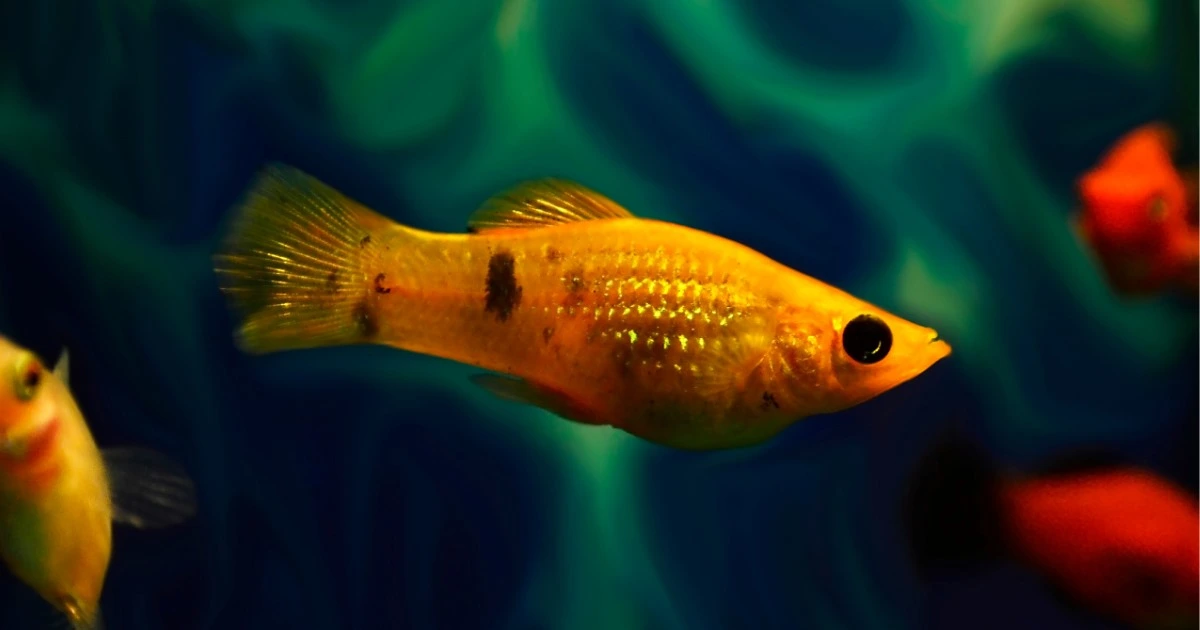
Description: Mollies are another popular livebearer that is closely related to guppies. They come in various colors and patterns, including black, white, orange, and dalmatian. Mollies are slightly larger than guppies but are equally peaceful and easy to care for.
Size: Mollies can grow to about 4 inches in length, depending on the species.
Water Requirements: Mollies prefer slightly alkaline water with a pH between 7.5 and 8.5, and temperatures between 72°F and 82°F. They can also tolerate brackish water, though it’s not necessary for their care.
Behavior: Mollies are active swimmers that enjoy the middle and top levels of the tank. They are social fish and should be kept in groups. Like guppies, mollies are livebearers, so it’s important to keep an eye on population growth if males and females are housed together.
Compatibility: Mollies are slightly larger than guppies but share similar water and diet requirements. They are peaceful and won’t nip at guppy fins, making them excellent tank mates.
3. Platies
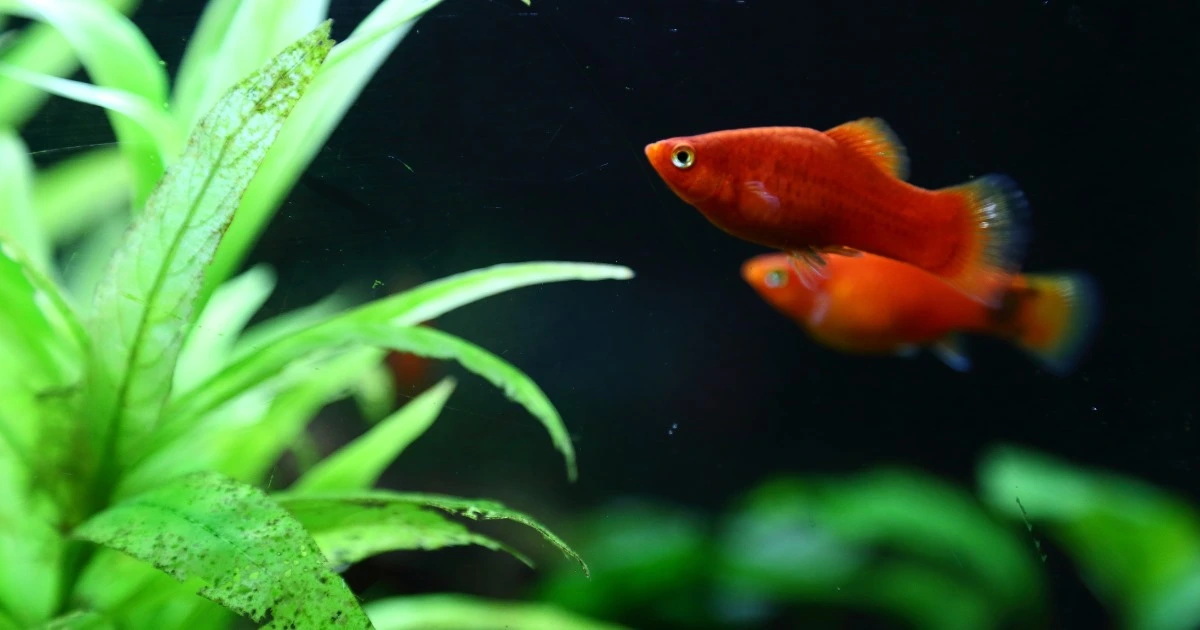
Description: Platies are another small, colorful fish that are ideal for community tanks. They are hardy, easy to care for, and come in a wide range of colors, including red, orange, yellow, and blue.
Size: Platies typically grow to about 2.5 inches in length.
Water Requirements: Platies thrive in water temperatures between 70°F and 80°F, with a pH of 7.0 to 8.0. They prefer moderately hard water.
Behavior: Platies are active, social fish that enjoy swimming in groups. They are peaceful and get along well with most other fish. Like guppies, they are livebearers, so consider separating males and females if you don’t want a lot of fry.
Compatibility: Platies are similar in size and temperament to guppies, making them a great match. Their vibrant colors and lively behavior can add excitement to your tank.
4. Neon Tetras
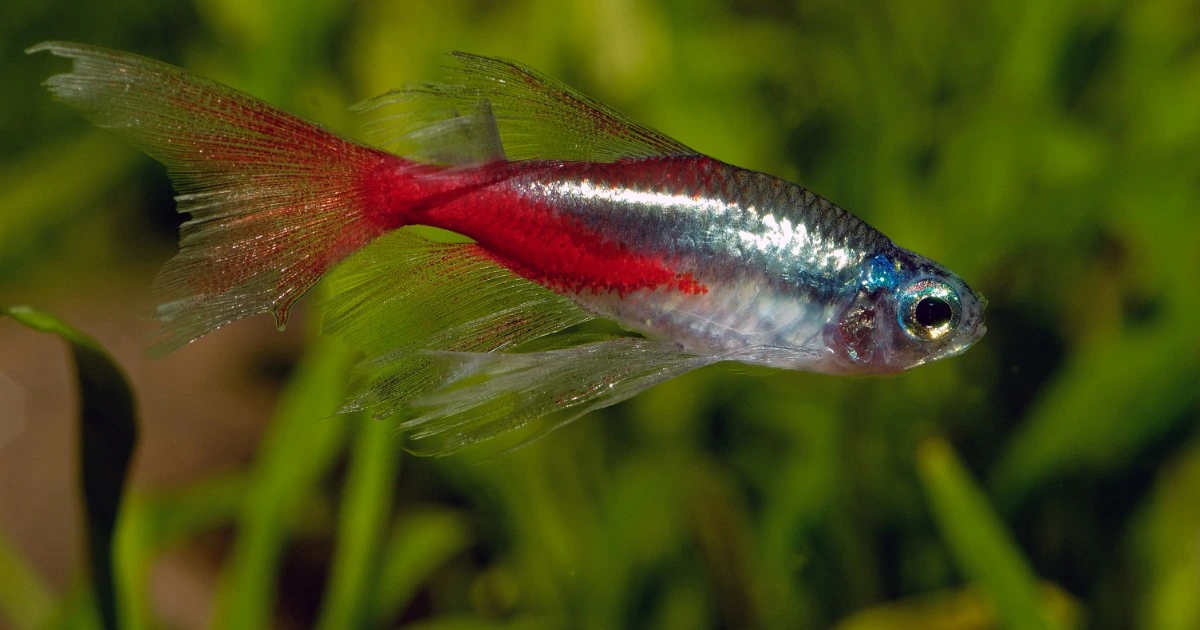
Description: Neon tetras are small, brightly colored fish that are often described as the “jewels” of the aquarium. They have a striking blue and red stripe that runs along their bodies, making them a beautiful addition to any tank.
Size: Neon tetras grow to about 1.5 inches in length.
Water Requirements: They prefer water temperatures between 70°F and 81°F, with a pH of 6.0 to 7.0. They thrive in soft, slightly acidic water.
Behavior: Neon tetras are schooling fish, meaning they prefer to swim in groups of six or more. They are peaceful and spend most of their time in the middle to upper levels of the tank.
Compatibility: Neon tetras are a bit smaller than guppies but are very peaceful and won’t bother them. Their vibrant colors and schooling behavior make them an excellent addition to a guppy tank.
5. Harlequin Rasboras
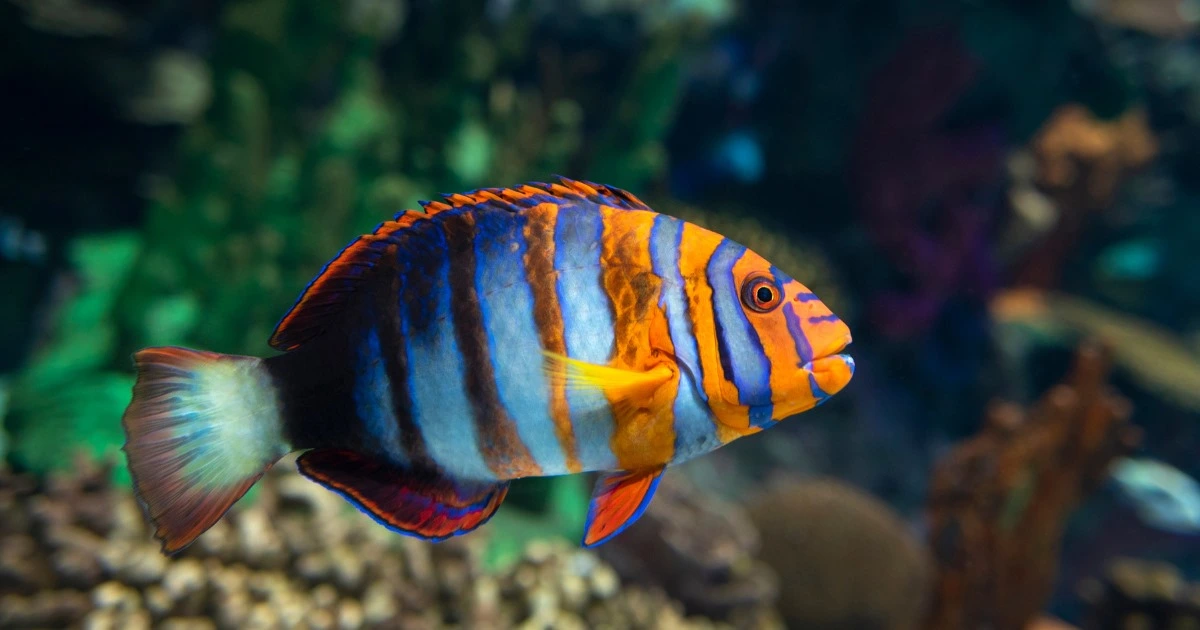
Description: Harlequin rasboras are small, hardy fish with a shiny, copper-orange body and a distinctive black triangle on their sides. They are popular in community tanks because of their peaceful nature and striking appearance.
Size: Harlequin rasboras grow to about 2 inches in length.
Water Requirements: They prefer water temperatures between 72°F and 81°F, with a pH of 6.0 to 7.5. They do best in soft to moderately hard water.
Behavior: Harlequin rasboras are schooling fish that should be kept in groups of six or more. They are active swimmers that enjoy the middle levels of the tank.
Compatibility: Harlequin rasboras are peaceful and easy to care for, making them a good match for guppies. Their schooling behavior adds movement and interest to the tank.
6. Swordtails
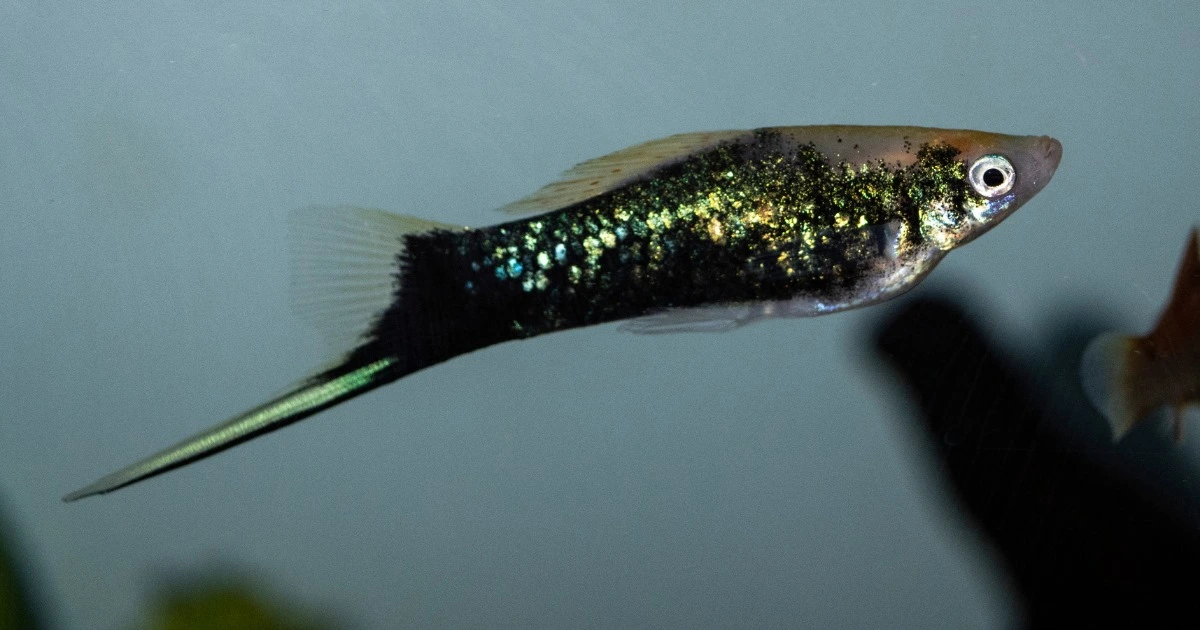
Description: Swordtails are similar to platies but are slightly larger and have a distinctive, elongated lower tail fin that resembles a sword. They come in a variety of colors, including red, green, and orange.
Size: Swordtails can grow to about 5 inches in length, including the tail.
Water Requirements: They prefer water temperatures between 72°F and 82°F, with a pH of 7.0 to 8.3. Swordtails are adaptable and can thrive in a range of water conditions.
Behavior: Swordtails are active swimmers and enjoy the middle to top levels of the tank. They are peaceful but can be slightly more aggressive than guppies, particularly males. It’s a good idea to keep more females than males to reduce aggression.
Compatibility: Swordtails are generally compatible with guppies, though their larger size and slightly more aggressive nature should be monitored. They add a unique look to the tank with their sword-like tails.
7. Endler’s Livebearer

Description: Endler’s livebearers are closely related to guppies and are often considered their wild counterparts. They are small, colorful fish that are easy to care for and have a similar temperament to guppies.
Size: Endler’s livebearers grow to about 1.5 inches in length.
Water Requirements: They thrive in water temperatures between 72°F and 82°F, with a pH of 7.0 to 8.0.
Behavior: Endler’s livebearers are active, peaceful fish that enjoy swimming in groups. Like guppies, they are livebearers, so population control may be necessary.
Compatibility: Endler’s livebearers are almost identical to guppies in terms of care and behavior, making them perfect tank mates. They can even interbreed with guppies, so if you want to avoid this, consider keeping only one gender of each species.
8. Otocinclus Catfish (Otos)

Description: Otocinclus catfish, commonly known as otos, are small, algae-eating fish that are perfect for keeping your tank clean. They are peaceful and prefer to stay out of the way, making them great companions for guppies.
Size: Otos grow to about 2 inches in length.
Water Requirements: They prefer water temperatures between 72°F and 79°F, with a pH of 6.8 to 7.5.
Behavior: Otos are social fish that do best in groups of three or more. They spend most of their time attached to surfaces, eating algae and keeping the tank clean.
Compatibility: Otos are peaceful and won’t bother guppies. Their algae-eating habits make them a useful addition to the tank, especially if you have a problem with algae growth.
Non-Fish Tank Mates for Guppies
Fish aren’t the only creatures that can live happily with guppies. There are also several invertebrates and amphibians that can coexist peacefully in a guppy tank.
1. African Dwarf Frogs
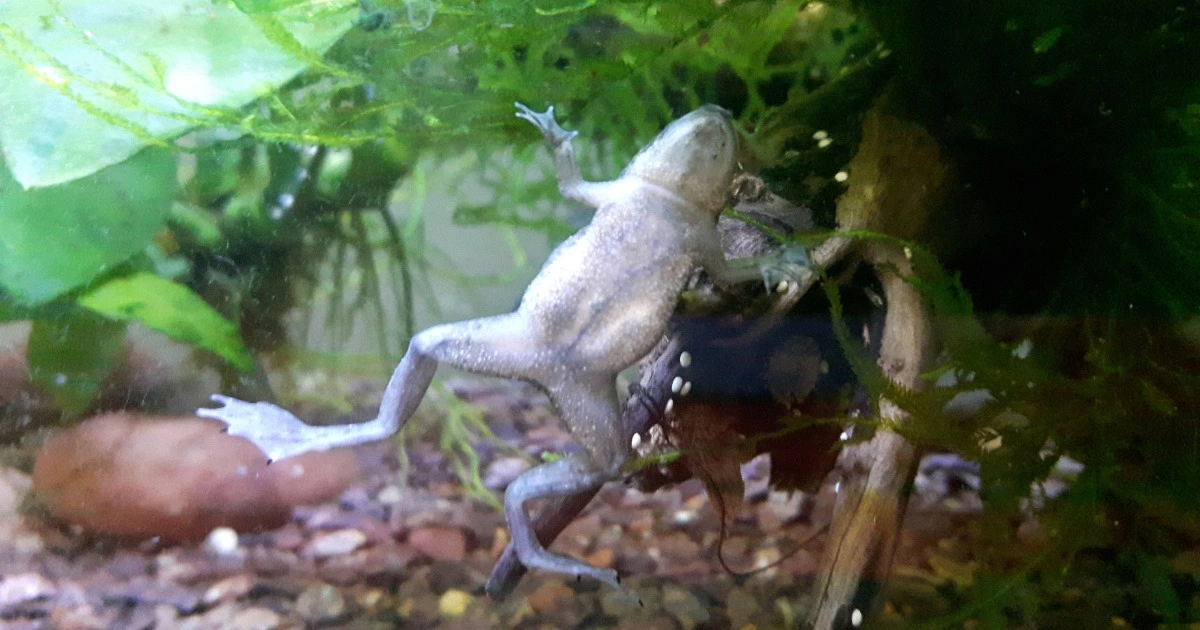
Description: African dwarf frogs are small, fully aquatic frogs that are popular in community tanks. They have a peaceful nature and can add an interesting dynamic to your aquarium.
Size: African dwarf frogs grow to about 2.5 inches in length.
Water Requirements: They prefer water temperatures between 72°F and 82°F, with a pH of 6.5 to 7.5.
Behavior: These frogs are shy and prefer to hide during the day, becoming more active at night. They are slow swimmers and might need help during feeding time to ensure they get enough food.
Compatibility: African dwarf frogs are peaceful and can live with guppies without any issues. Just be sure to provide plenty of hiding spots and keep an eye on their food intake.
2. Apple Snails
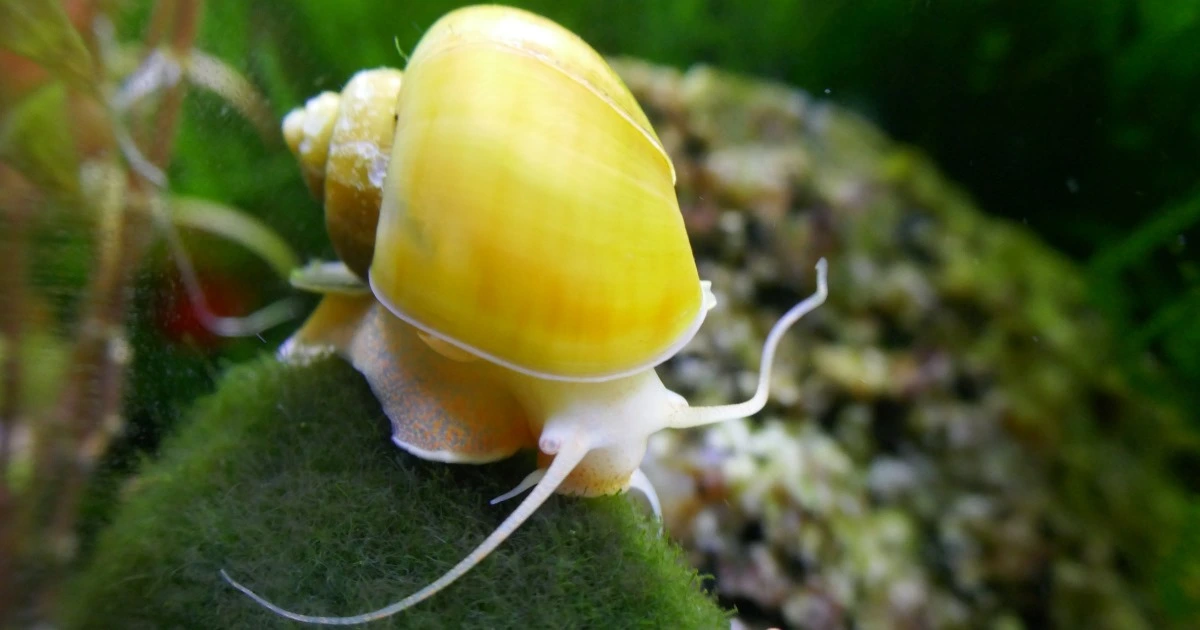
Description: Apple snails are large, colorful snails that are easy to care for and can help keep your tank clean by eating algae.
Size: Apple snails can grow to about 2 inches in diameter.
Water Requirements: They prefer water temperatures between 68°F and 82°F, with a pH of 7.0 to 8.0.
Behavior: Apple snails are peaceful and spend their time slowly moving around the tank, eating algae, and cleaning the glass and decorations. They are also known for occasionally escaping the tank, so be sure to have a lid!
Compatibility: Apple snails are non-aggressive and won’t bother guppies. However, they can produce a lot of waste, so it’s important to have good filtration in your tank.
3. Ghost Shrimp
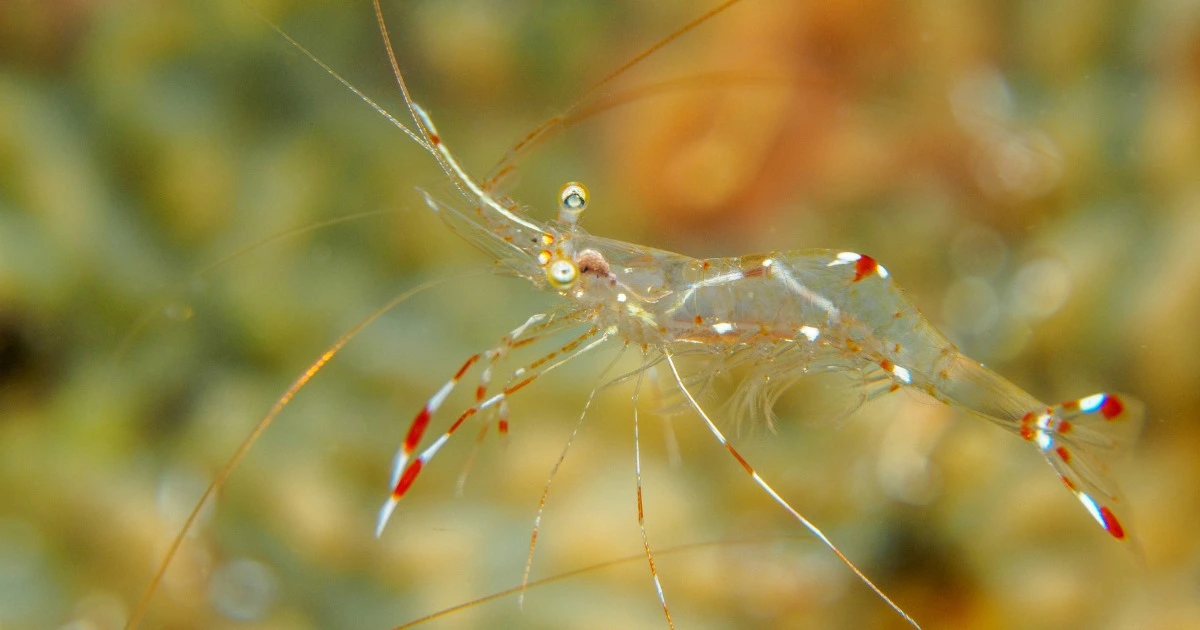
Description: Ghost shrimp, also known as glass shrimp, are small, transparent shrimp that are great for keeping your tank clean. They are inexpensive and easy to care for.
Size: Ghost shrimp grow to about 1.5 inches in length.
Water Requirements: They prefer water temperatures between 65°F and 82°F, with a pH of 6.5 to 8.0.
Behavior: Ghost shrimp are peaceful and spend most of their time scavenging for food. They are also excellent at cleaning up leftover food and debris from the tank.
Compatibility: Ghost shrimp are perfect companions for guppies. They won’t bother the fish and help keep the tank clean. Just be careful if you have larger fish that might see them as food.
4. Red Cherry Shrimp

Description: Red cherry shrimp are small, brightly colored shrimp that add a pop of color to your tank. They are also good cleaners, eating algae and leftover food.
Size: Red cherry shrimp grow to about 1.5 inches in length.
Water Requirements: They prefer water temperatures between 72°F and 78°F, with a pH of 6.5 to 8.0.
Behavior: These shrimp are peaceful and enjoy hiding among plants and decorations. They are also prolific breeders, so you might see your shrimp population grow quickly.
Compatibility: Red cherry shrimp are great companions for guppies. Their bright red color contrasts nicely with the guppies, and their peaceful nature means they won’t cause any problems.
Fish to Avoid When Keeping Guppies
While there are many great tank mates for guppies, there are also some fish that should be avoided. These species can be aggressive, may nip at guppies’ fins, or might even eat smaller fish.
1. Betta Fish
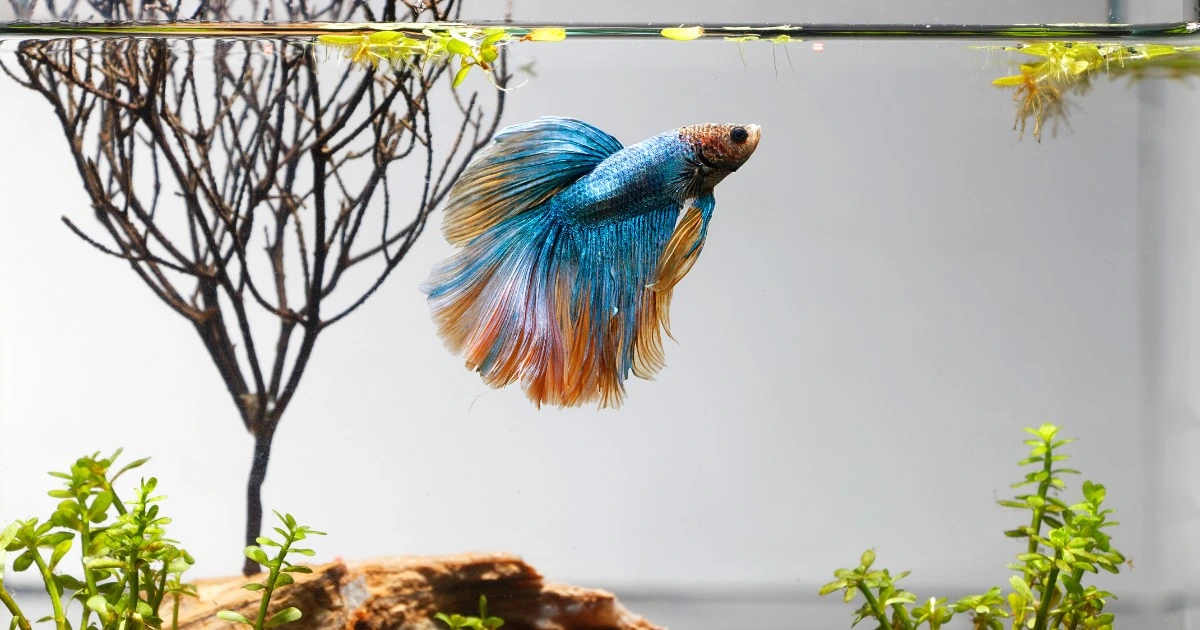
Betta fish, also known as Siamese fighting fish, are beautiful but aggressive. Male bettas, in particular, are known for their territorial nature and might attack guppies, especially those with long, flowing fins.
2. Tiger Barbs

Tiger barbs are notorious fin-nippers. Their playful yet aggressive nature means they often harass other fish, particularly those with long fins like guppies.
3. Angelfish
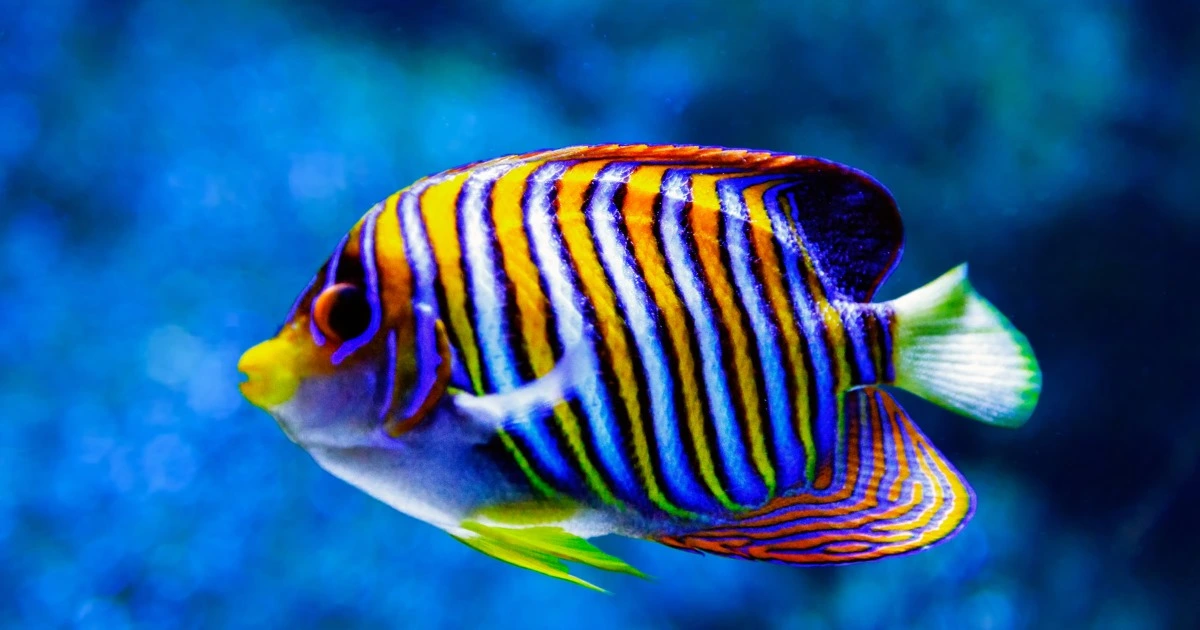
While angelfish are stunning, they can grow quite large and may see smaller fish like guppies as food. They can also be territorial and aggressive, especially during breeding.
4. Large Cichlids
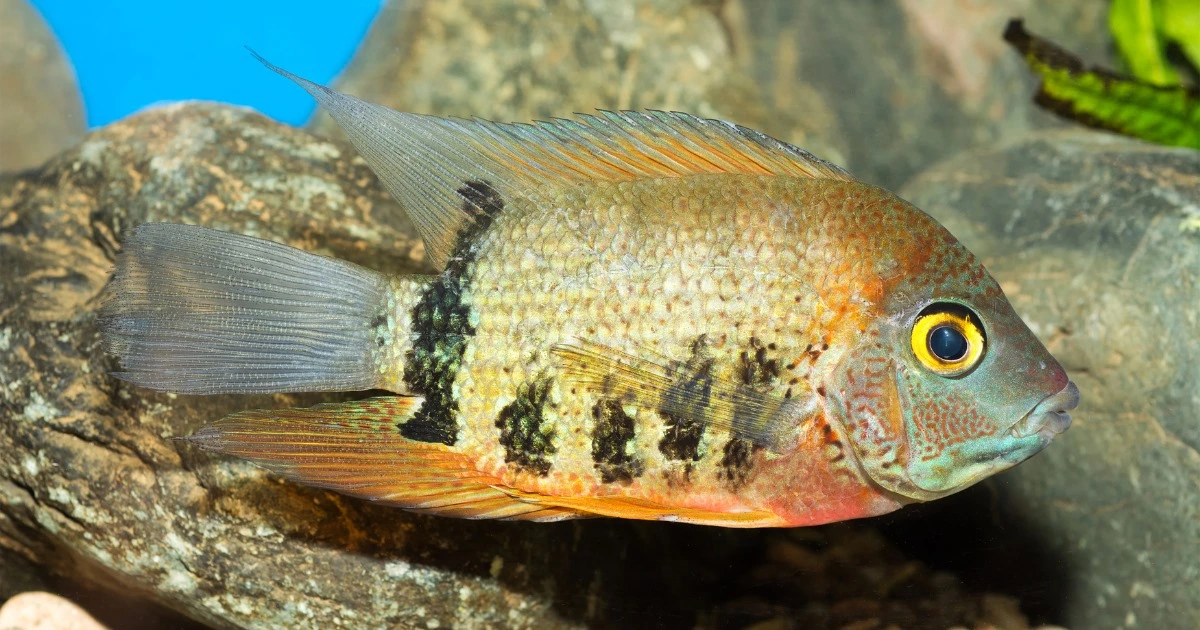
Cichlids are generally not good companions for guppies. They are often aggressive and can grow much larger than guppies, leading to potential conflicts and predation.
5. Red-Tailed Sharks

Red-tailed sharks are aggressive bottom-dwellers that can be territorial and chase other fish. Their behavior can cause significant stress to guppies.
Creating the Perfect Community Tank
Creating a peaceful and visually appealing community tank requires careful planning and consideration of the needs and behaviors of all the fish involved. Here are some tips to ensure your guppy tank is a success:
1. Tank Size and Space
Make sure your tank is large enough to accommodate all your fish comfortably. Overcrowding can lead to stress, poor water quality, and increased aggression. As a general rule, allow one gallon of water per inch of fish.
2. Provide Hiding Spots
Fish need places to hide and feel secure. Adding plants, rocks, and decorations can create hiding spots for shy fish and reduce stress. This is especially important for bottom-dwellers like corydoras and shrimp.
3. Balanced Diet
Ensure all your fish are getting the right nutrition. Feed a variety of foods, including flakes, pellets, frozen, and live foods, to meet the dietary needs of all the species in your tank.
4. Regular Maintenance
Keep your tank clean by performing regular water changes and checking the water parameters. This helps maintain a healthy environment for your fish and prevents the buildup of harmful toxins.
5. Monitor Behavior
Keep an eye on your fish for any signs of stress, aggression, or illness. If you notice any issues, such as fin-nipping or bullying, you may need to separate the offending fish or make adjustments to your tank setup.
Conclusion
Building a community tank with guppies can be a rewarding and enjoyable experience. By carefully selecting compatible tank mates, you can create a vibrant, peaceful environment that allows all your fish to thrive. Remember to choose species that are peaceful, similar in size, and have the same water and dietary needs as guppies. With the right care and attention, your guppy tank will be a beautiful and dynamic addition to your home, providing endless hours of enjoyment.
1 thought on “Best Compatible Tank Mates for Guppies | Peaceful Fish Guide”